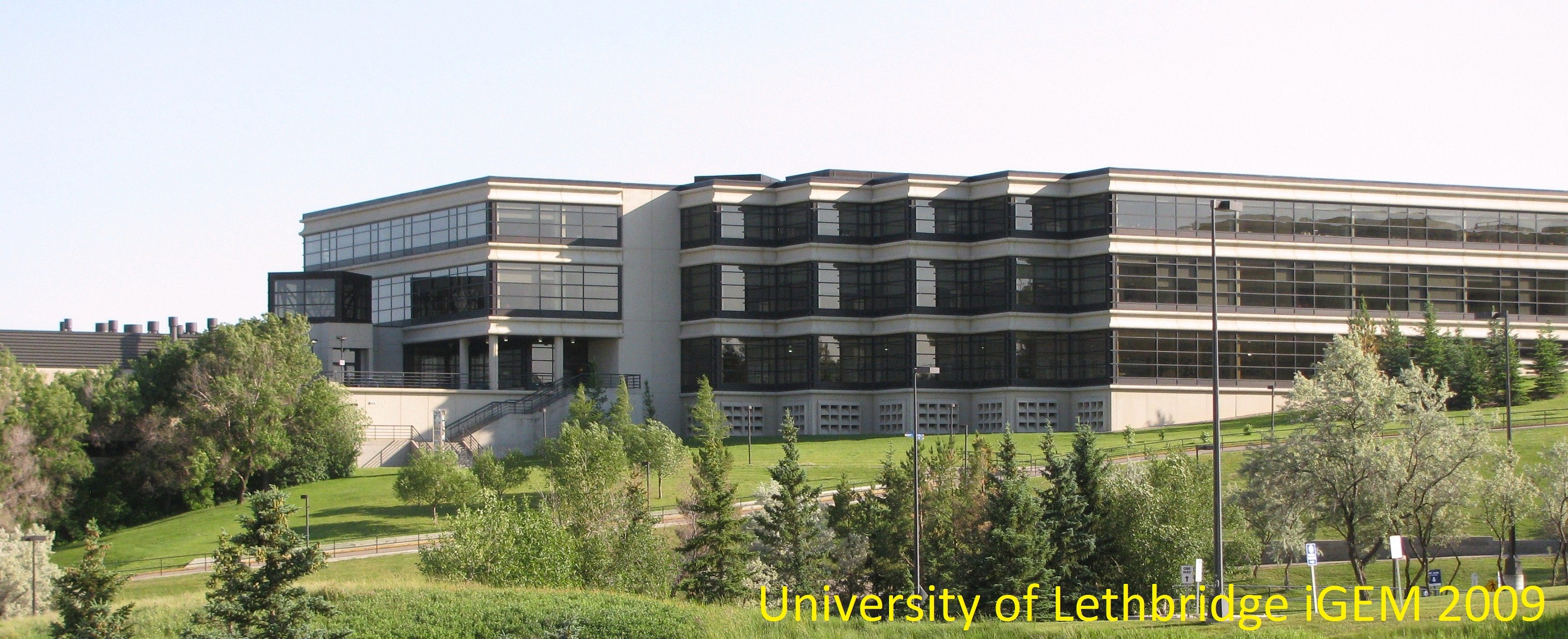Team:Lethbridge
From 2009.igem.org
(→University of Lethbridge Sponsors) |
(→Project Overview) |
||
| Line 296: | Line 296: | ||
==Project Overview== | ==Project Overview== | ||
| - | + | The issues surrounding energy production are becoming more prominent with increasing environmental concerns and the rising cost of energy. Microbial fuel cells (MFCs) use biological systems to produce an electrical current. Cyanobacteria are organisms which have been studied in MFCs and have been found to create a current, although not highly efficient (Tsujimura et al., 2001). We wish to increase the efficiency of the cyanobacteria MFC by introducing microcompartments to create a BioBattery. The microcompartments are created by the production of the protein lumazine synthase forms icosahedral capsids. As a proof of principle we will create this system within Escherichia coli and target two different fluorescent proteins within the microcompartment to observe fluorescence resonance energy transfer. Furthermore, we will be exploring a novel method for the mass production of uniform nanoparticles, which is more efficient and cost effective than current methods. | |
| - | + | ||
| - | + | ||
==University of Lethbridge Sponsors== | ==University of Lethbridge Sponsors== | ||
Revision as of 01:41, 20 October 2009
- Home
- Team
- Project
- Ethics
- Notebook
- Meetings
- Modeling
- Parts
- Collaboration
- Judging
- Extra Information on SynBio
Project Overview
The issues surrounding energy production are becoming more prominent with increasing environmental concerns and the rising cost of energy. Microbial fuel cells (MFCs) use biological systems to produce an electrical current. Cyanobacteria are organisms which have been studied in MFCs and have been found to create a current, although not highly efficient (Tsujimura et al., 2001). We wish to increase the efficiency of the cyanobacteria MFC by introducing microcompartments to create a BioBattery. The microcompartments are created by the production of the protein lumazine synthase forms icosahedral capsids. As a proof of principle we will create this system within Escherichia coli and target two different fluorescent proteins within the microcompartment to observe fluorescence resonance energy transfer. Furthermore, we will be exploring a novel method for the mass production of uniform nanoparticles, which is more efficient and cost effective than current methods.
University of Lethbridge Sponsors
 |
 |

|
 |

|
 |
 "
"

